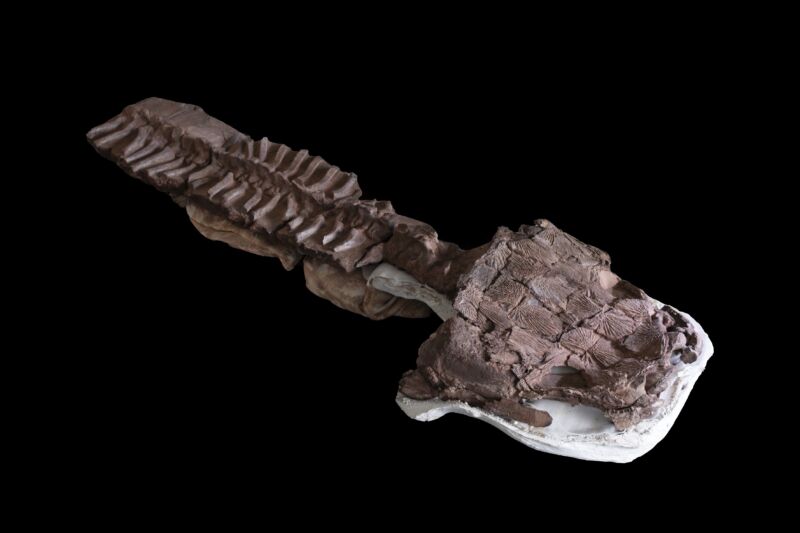
C. Marsicano
Gaiasia jennyae, a newly discovered freshwater apex predator with a body length reaching 4.5 meters, lurked in the swamps and lakes around 280 million years ago. Its wide, flattened head had powerful jaws full of huge fangs, ready to capture any prey unlucky enough to swim past.
The problem is, to the best of our knowledge, it shouldn’t have been that large, should have been extinct tens of millions of years before the time it apparently lived, and shouldn’t have been found in northern Namibia. “Gaiasia is the first really good look we have at an entirely different ecosystem we didn’t expect to find,” says Jason Pardo, a postdoctoral fellow at Field Museum of Natural History in Chicago. Pardo is co-author of a study on the Gaiasia jennyae discovery recently published in Nature.
Common ancestry
“Tetrapods were the animals that crawled out of the water around 380 million years ago, maybe a little earlier,” Pardo explains. These ancient creatures, also known as stem tetrapods, were the common ancestors of modern reptiles, amphibians, mammals, and birds. “Those animals lived up to what we call the end of Carboniferous, about 370–300 million years ago. Few made it through, and they lasted longer, but they mostly went extinct around 370 million ago,” he adds.
This is why the discovery of Gaiasia jennyae in the 280 million-year-old rocks of Namibia was so surprising. Not only wasn’t it extinct when the rocks it was found in were laid down, but it was dominating its ecosystem as an apex predator. By today’s standards, it was like stumbling upon a secluded island hosting animals that should have been dead for 70 million years, like a living, breathing T-rex.
“The skull of gaiasia we have found is about 67 centimeters long. We also have a front end of her upper body. We know she was at minimum 2.5 meters long, probably 3.5, 4.5 meters—big head and a long, salamander-like body,” says Pardo. He told Ars that gaiasia was a suction feeder: she opened her jaws under water, which created a vacuum that sucked her prey right in. But the large, interlocked fangs reveal that a powerful bite was also one of her weapons, probably used to hunt bigger animals. “We suspect gaiasia fed on bony fish, freshwater sharks, and maybe even other, smaller gaiasia,” says Pardo, suggesting it was a rather slow, ambush-based predator.
But considering where it was found, the fact that it had enough prey to ambush is perhaps even more of a shocker than the animal itself.
Location, location, location
“Continents were organized differently 270–280 million years ago,” says Pardo. Back then, one megacontinent called Pangea had already broken into two supercontinents. The northern supercontinent called Laurasia included parts of modern North America, Russia, and China. The southern supercontinent, the home of gaiasia, was called Gondwana, which consisted of today’s India, Africa, South America, Australia, and Antarctica. And Gondwana back then was pretty cold.
“Some researchers hypothesize that the entire continent was covered in glacial ice, much like we saw in North America and Europe during the ice ages 10,000 years ago,” says Pardo. “Others claim that it was more patchy—there were those patches where ice was not present,” he adds. Still, 280 million years ago, northern Namibia was around 60 degrees southern latitude—roughly where the northernmost reaches of Antarctica are today.
“Historically, we thought tetrapods [of that time] were living much like modern crocodiles. They were cold blooded, and if you are cold blooded the only way to get large and maintain activity would be to be in a very hot environment. We believed such animals couldn’t live in colder environments. Gaiasia shows that it is absolutely not the case,” Pardo claims. And this turned upside-down lots of what we knew about life on Earth back in gaiasia’s time.




















+ There are no comments
Add yours